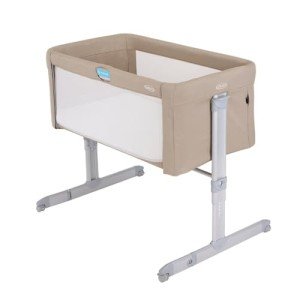12 Stats About Bedside Cot For Comfortable Sleep To Make You Seek Out Other People
The Essential Guide to Bedside Cots for Comfortable Sleep
In the journey of parenthood, one of the most substantial challenges new parents face is ensuring their baby sleeps easily while also giving them peace of mind. Bedside cots, also referred to as co-sleepers or bedside sleepers, have actually acquired appeal as a solution to this predicament. By permitting parents to keep their infants close during the night, these cots promote safety, convenience, and convenience. This short article explores the benefits, features, and elements to consider when selecting a bedside cot, together with addressing often asked concerns to assist parents in making notified decisions.
What is a Bedside Cot?
A bedside cot is a type of crib designed to be placed beside the parent's bed. official source include a side that can be lowered or totally removed, permitting easy access to the baby throughout sleep. This design not only assists in nighttime feedings but likewise establishes a safe sleeping environment for infants.
Table: Features of Popular Bedside Cots
Function
Description
Security Standards
Need to fulfill or surpass security compliance policies (e.g., ASTM, CPSC)
Height Adjustment
Adjustable legs to accommodate various bed heights
Breathable Materials
Mesh sides for ventilation and exposure
Portability
Lightweight and collapsible for easy transport
Storage Options
Integrated storage services for keeping essentials close
Benefits of Using a Bedside Cot
Enhanced Convenience
One of the primary advantages of bedside cots is benefit. Parents can easily participate in to their baby's requirements without having to leave their bed. This can be specifically valuable throughout late-night feedings or diaper modifications.
Improved Bonding
Being able to see and hear their infant throughout the night cultivates a stronger psychological connection. Babies feel more secure when they are close to their parents, which can cause better sleep for both parties.
Lowered Risk of SIDS
Some research studies recommend that co-sleeping in a bedside cot may reduce the threat of Sudden Infant Death Syndrome (SIDS), as parents are more likely to discover if their baby is having problem breathing or remains in distress.
Encourages Independent Sleep
While infants might at first rely on closeness to go to sleep, having a bedside cot can encourage them to develop independent sleeping routines in time. This setup enables a seamless shift from proximity to self-reliance.
Elements to Consider When Choosing a Bedside Cot
Safety Standards: Always validate that the cot sticks to the newest safety regulations. Try to find accreditations indicating compliance with safety requirements.
Size and Fit: Ensure the cot fits snugly beside the moms and dad's bed. Adjustable height settings are a key feature to accommodate various bed types.
Material Quality: Opt for cots made from non-toxic materials with breathable fabrics. This ensures the baby is safe while also enabling great air flow.
Alleviate of Use: Look for features that improve use, such as easy foldability, detachable sides, and convenient storage compartments.
Portability: If you travel regularly, think about a cot that is light-weight and easy to take apart or transport.
Popular Bedside Cot Options
The marketplace is flooded with options, making it necessary to select carefully. Here are some popular choices:
1. Chicco Next2Me
- Adjustable height settings
- Easy attachment system
- Breathable mesh side panels
2. Halo Bassinest
- Rotates 360 degrees for easy access
- Nightlight and relaxing sounds
- Adjustable height to fit various beds
3. BabyBjörn Cradle
- Simple design with natural aspects
- Rocking function to relieve the baby
- Compact size for easy placement
4. Cuddle Me Organic
- Made from non-toxic products
- Supplies mild co-sleeping support
- Portable and easy to bring
5. Fisher-Price Soothing Motions Bassinet
- Gentle movement and calming vibrations
- Range of noises to soothe infants
- Adjustable height for bedside use
Frequently Asked Questions About Bedside Cots
1. Are bedside cots safe for newborns?
Yes, bedside cots are created particularly for infants and follow stringent security requirements. Nevertheless, always ensure correct setup and follow maker standards.
2. What is the suggested age for using a bedside cot?
Usually, bedside cots are safe for use from birth until the baby begins to press up on their hands or knees, usually around 6 months of age.
3. How do I clean up a bedside cot?
Follow the manufacturer's cleaning directions. Most models feature detachable and washable material covers for easy upkeep.
4. Can bedside cots be utilized with all bed types?
Many bedside cots use adjustable heights and can be adapted for different bed designs, including platform and tall beds.
5. How do I know if my baby is all set to shift from the cot?
Signs might include increased mobility and the ability to sit up or crawl. Constantly speak with a pediatrician if uncertain about transitioning.
Bedside cots offer new parents a trusted and comfortable solution for infant sleep requires, blending safety with the convenience of keeping babies close during the night. By understanding their features and benefits, in addition to thinking about necessary aspects when selecting one, parents can enhance their and their child's sleep experience. By offering a nurturing environment for sleep, bedside cots add to the total wellness of both parents and infants, making the journey into parenthood just a bit easier.
